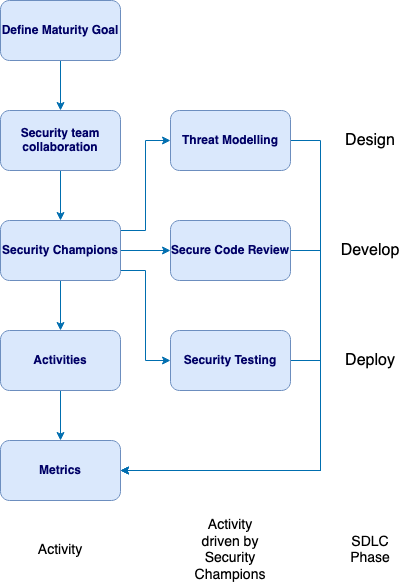OWASP Security Culture
Introduction
This guide will discuss the importance and benefits of establishing a security culture when building an application security program. Security should be considered at each stage of the Software Development LifeCycle (SDLC), helping to create secure development practices.
This guide can be used by a broad range of roles: security; developers; testers and team leaders. The guide does not assume a particular SDLC, it can be used for any SDLC and software development approach.
This guide will introduce ideas and activities to help uplift security, such as threat modelling, but does not seek to be an authoritative source for these activities. References to more comprehensive material on these activities will instead be provided.
The first step to building an application security program is defining a maturity goal which sets a target to be measured against. To be able to meet the defined maturity goal, the appropriate resources need to be assigned. This requires having management buyin. The importance of security needs to be understood by roles from the development team manager to the product manager to ensure that security work can be prioritised accordingly.
Collaboration between the security team and development teams is essential. The security team expects the development team to write secure code, but they need to provide guidance on application security. With security team collaboration, security can be distributed across the development team.
A good way to distribute security across development teams is by using "Security Champions". A Security Champion acts as a point of contact for the developers to ask security questions. This helps scale out security, as there are often fewer security team members than development team members.
Activities help build the security mindset into development teams. Interactive labs and vulnerable by design applications help developers learn different security vulnerabilities and how to fix them. Capture the Flag (CTF) events and gamification are interesting and engaging activities to help build security.
Threat modelling is a useful task for developers to use to identify potential security issues early in the development lifecycle. This task need not be only performed by security architects, but can be done by developers in another way to scale out security.
Security testing is used to ensure code delivered is secure. However, tests can be added at multiple stages of the development lifecycle, not just the end. It is beneficial to involve the development team in the deployment of the security testing tools used. Ensure that the tool will provide value and have minimal false positives. It is also beneficial to have penetration testing reports that are provided to the development team be free from false positives and give details on how to remediate particular findings.
Lastly, the use of metrics is important to measure progress of the security uplift. Metrics from the Security Champions program, threat modelling, code review, security testing, and other activities are all useful to give an indication of how the application security uplift is improving over time. This allows adjustments to be made to the overall program to ensure the defined maturity goals are met.

Figure 1-1: Security Activities Flow Chart